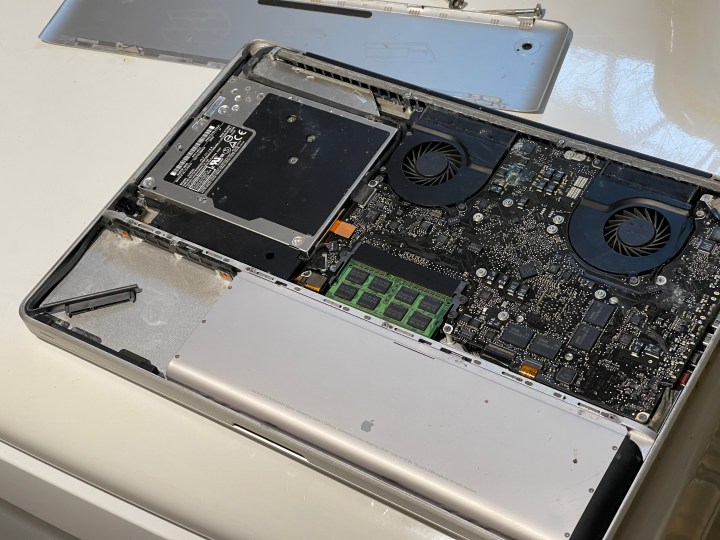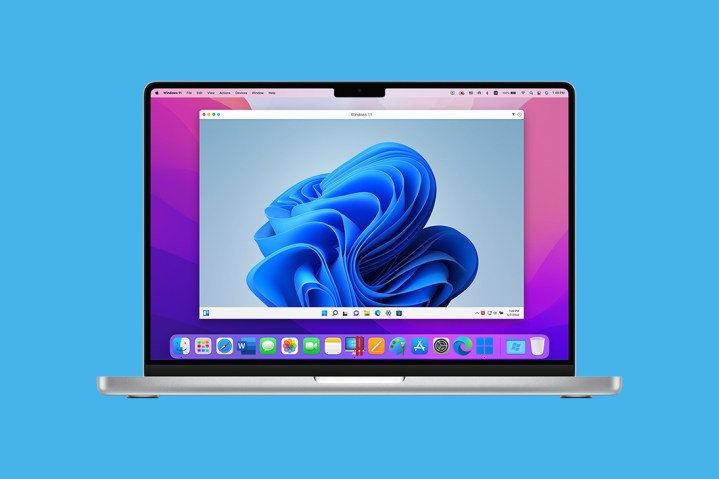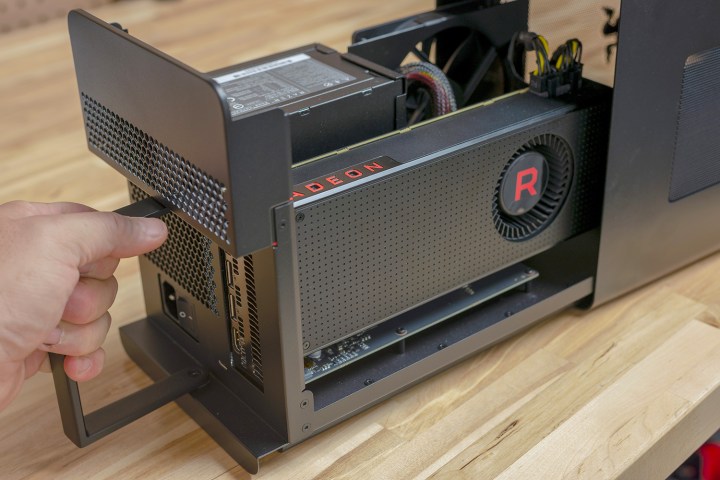MacBooks are pretty amazing these days. Thanks to the efficiency of Apple Silicon, you get all-day battery life, as well as the ability to edit videos when unplugged from power. The new MacBook Air with the M3 chip is even good enough for gaming.
All of that is in contrast to the Intel Macs of the past.
However, there are a few things the modern MacBooks lost in the transition to Apple Silicon. Of course, I’m not saying old Intel-powered laptops are better than the current crop of modern Macs. The point is to show where there is room for Apple Silicon Macs to grow. Hopefully, they will reclaim some of these features someday.
Upgradability

Before Apple started its transition to Apple Silicon, MacBooks used to be quite upgradable. The most recent of those was the 2017 MacBook Pro without a Touch Bar, which let you swap the SSD. Prior to that, the last MacBooks that let you swap out RAM were the mid-2012 non-Retina models. Even Intel-powered non-Mac laptops like the Mac Pro let you swap out components.
After those years, on the MacBook side, Apple moved to soldering storage and RAM down to the motherboard. So, what you purchased is what you were stuck with. While it might be true that some Intel MacBooks from years past aren’t still upgradable, it was the Intel-based Mac that made upgradability easy and mainstream. Just watch Apple CEO Tim Cook talk about it in this presentation from 2012.
These days, you just can’t customize your Apple Silicon MacBook after buying it like you could back in the day. If you want that in a modern Mac, be prepared to shell out a fortune for the new Mac Pro, which starts at $7,000 and lets you enjoy PCI expansion. Or, just pay up for the storage and RAM upgrades at checkout at the Apple Store instead — and then instantly regret the choice.
Running Windows

While macOS is the best way to experience a Mac product, there still might come a time when you’ll need to run Windows. It could be for a piece of software that’s not on macOS, or just to enjoy an OS that’s familiar if you’re switching away from Windows for the first time.
Intel-based Macs sport “Bootcamp,” a software feature that makes running Windows on a Mac feel native. You’re able to switch between macOS and Windows with the touch of a button at boot or set Windows as the default OS on your Mac. Unfortunately, the feature has since been removed on all Macs featuring Apple Silicon, meaning the only way to run Windows on a modern Mac is through emulation with software like Parallels.
While we’ve seen the benchmarks that prove running Windows 11 on a Mac through emulation is better than running Windows on ARM-based hardware, there’s still a glaring flaw with it: Running Windows on a Mac through emulation limits what you can do. You might be able to browse the web and go through with productivity tasks, but gaming and heavy-duty tasks are out of the question. You’ll have to lower settings just to get things working right.
You’ll also have to incur additional costs. Bootcamp is a free software included in macOS. The only cost to using it is your Windows license. To run Windows on a modern Mac, you’ll have to subscribe to Parallels or consider using alternate software like VMware Fusion on top of your Windows license.
eGPU support

External GPUs, or eGPU for short, are pretty popular with gamers. If a laptop isn’t up to specifications, you can plug a GPU into an enclosure, and then plug that enclosure into a laptop to get a better gaming experience. Most Windows laptops have eGPU support over Thunderbolt, and so do older Macs.
But as Apple indicates in support documentation, the benefits of eGPU support are pretty clear. You get additional graphics performance for professional apps, 3D gaming, and VR content creation. Unfortunately, however, eGPU support is limited to Macs with Intel CPUs. Modern Macs with Apple Silicon don’t work with the feature due to driver incompatibility.
It isn’t too surprising, though. Apple Silicon packs plenty of GPU power as is. Apple also has its own graphics API that can be used for gaming and other GPU tasks on macOS. It also has a Game Porting Toolkit that can help bring games to macOS.
Multi-monitor support on MacBooks

The highlight feature of the new MacBook Air M3 is the option to connect it to dual displays, with the lid closed. Unfortunately, though, Macs with Apple Silicon don’t make plugging into external displays very easy. Apple even has a support webpage for the matter. This is another thing that Intel Macs do better.
According to Apple, the number of displays you connect to your MacBook depends on which model you own. It varies across the lineup, with the MacBook Pro with M2 or M3 Max supporting four displays, and the standard MacBook Pro with M2 chip supporting two displays. There are workarounds with docks, but they require extra purchases.
It just works on an Intel Mac. Aside from the short-lived 12-inch MacBook, all Macs with Intel chips connect up to a maximum of two displays when connected over USB-C or while using a hub and dock.
Why I won’t buy a MacBook with Apple Silicon
My last MacBook was a 2011 MacBook Pro. But since then, I’ve transitioned to using a M1 Mac Mini and an iPad Pro in tandem with my Windows laptops. While I haven’t made the transition to an Apple Silicon MacBook yet, I’m happily enjoying the improved performance of these newer machines. I still look back at fondness at my old MacBook Pro, however, and hope that Apple will find ways to improve some of the limitations I listed above in future releases.
Editors’ Recommendations


:quality(85):upscale()/2025/01/21/935/n/1922507/1bb76df3679011223c7564.17630251_.png)




